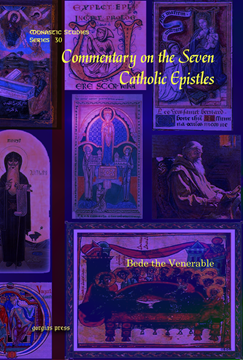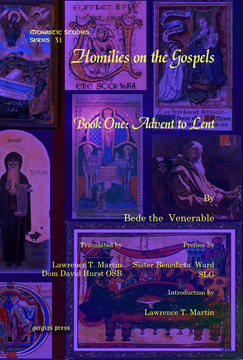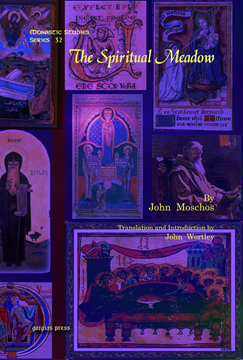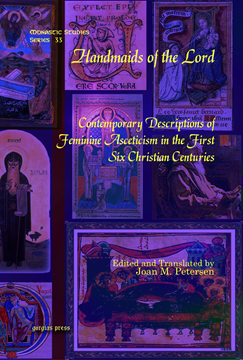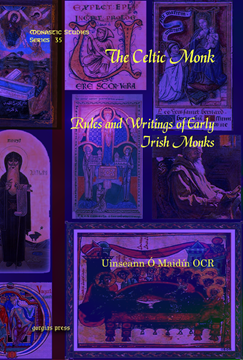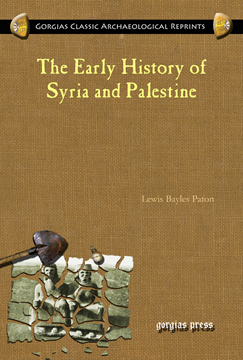Commentary on the Seven Catholic Epistles
Series: Monastic Studies Series 30
ISBN: 978-1-60724-208-6
Best known in the Middle Ages as a scriptural exegete, Bede here provides a running gloss on the Letters of James, Peter, John, and Jude. Why he chose these `lesser letters' for his first attempt at written exegesis no one knows; perhaps he did so because so few other scriptural commentators had glossed them. They are unique in that he inclined more to the literal interpretation of the text than he did in his more allegorical later commentaries. Preachers will find them useful; readers will find them illuminating.
$177.00 (USD) $106.20 (USD)
Homilies on the Gospels
Book One: Advent to Lent
By Bede the Venerable; Translated by Lawrence T. Martin & Dom David Hurst OSB; Preface by Sister Benedicta Ward SLG; Introduction by Lawrence T. Martin
Series: Monastic Studies Series 31
ISBN: 978-1-60724-209-3
From the eighth to the fifteenth centuries, Bede's authority as a scriptural exegete was second only to that of the Doctors of the Latin Church. Yet modern readers associate this remarkable scholar-monk only with his History of the English Church and Nation and ignore the works he saw as his chief accomplishment.
$154.00 (USD) $92.40 (USD)
The Spiritual Meadow
By John Moschos; Translation and Introduction by John Wortley
Series: Monastic Studies Series 32
ISBN: 978-1-60724-210-9
'I have plucked the finest flowers of the unmown meadow and worked them into a row which I now offer to you', wrote John Moschos as he began his tales of the holy men of seventh-century Palestine and Egypt. This translation offers readers contemporary insights into the spirituality of the desert.
$160.00 (USD) $96.00 (USD)
Handmaids of the Lord
Contemporary Descriptions of Feminine Asceticism in the First Six Christian Centuries
Edited and Translated by Joan M. Petersen
Series: Monastic Studies Series 33
ISBN: 978-1-60724-211-6
Throughout the Christian world, women have chosen to lead disciplined lives of prayer and asceticism. Descriptions of early role-models—Macrina, the two Paulas and Melanias, Radagunde—and others by contemporaries, usually men, provide details of their austerities, their aspirations, and their relationship with the Church and the world, not least with male authority figures.
$192.00 (USD) $115.20 (USD)
The Spirituality of the Medieval West
From the Eighth to the Twelfth Century
By André Vauchez; Translated by Colette Friedlander
Series: Monastic Studies Series 34
ISBN: 978-1-60724-212-3
Defining spirituality as 'the dynamic unity between the content of a faith and the way in which it is lived by historically determined human beings', Vauchez steps outside the clerical world usually studied to trace the religious mentality of the laity, the ordinary and often illiterate majority of Christians.
$129.00 (USD) $77.40 (USD)
The Celtic Monk
Rules and Writings of Early Irish Monks
Series: Monastic Studies Series 35
ISBN: 978-1-60724-213-0
In the Early Middle Ages, the irish temperament—individualistic, poetic, and deeply loyal to family—produced great and learned saints and a unique monastic literature. Before the Norman Invasion, the isolation of the island allowed the development of traditions quite different from those of the continent or Britain. The rules, maxims, litanies, and poems of early irish monks convey the spirituality of the Isle of Saints in the sixth to eighth centuries.
$166.00 (USD) $99.60 (USD)
Jacob of Sarug’s Homily on Simon Peter, when our Lord said ‘Get behind me, Satan’
Translation and Introduction by Adam Carter McCollum
Series: Texts from Christian Late Antiquity 26
ISBN: 978-1-60724-214-7
Jacob of Sarug's (d. 521) homily on Simon Peter, when our Lord said, “Get behind me Satan!” (Matt 16:23) touches the themes of Jesus’ divinity and death, warfare with Satan, the harrowing of hell, and his relationship with Peter. Peter’s rebuke of Jesus’ willingness to die gives Jesus (through Jacob) the occasion to explain what his death will accomplish. The volume constitutes a fascicle of The Metrical Homilies of Mar Jacob of Sarug, which, when complete, will contain the original Syriac text of Jacob's surviving sermons, fully vocalized, alongside an annotated English translation.
$33.00 (USD) $19.80 (USD)
Mount Sinai
A Modern Pilgrimage
Series: Kiraz Historic Travels Archive 22
ISBN: 978-1-60724-243-7
This timeless travelogue by noted hymnographer and missionary A. Mary R. Dobson recounts her journey to the manuscript-rich monastery of St. Catherine’s in the Sinai peninsula. Traveling with her cousin, Orientatlist Rendel Harris, Dobson wrote an account of her journey that still captures the imagination of modern day readers.
$124.00 (USD) $74.40 (USD)
The Early History of Syria and Palestine
Series: Kiraz Classic Archaeological Reprints 8
ISBN: 978-1-60724-244-4
Although written before the modern discoveries that define Ancient Near Eastern studies today, Paton’s historic foray into the history of Syria and Palestine served to start a continuing discussion that remains active today. Covering the Babylonian, Aramaean, Egyptian, Hittite, and Assyrian empires, Paton demonstrates what was known of the history of the region with the limited resources of nineteenth-century explorations.
$189.00 (USD) $113.40 (USD)
The Creation-Story of Genesis I
Sumerian Theogony and Cosmogony
By Hugo Radau
Series: Analecta Gorgiana 174
ISBN: 978-1-60724-245-1
In this brief study of the creation account in Genesis 1, Radau makes full use of the Sumerian materials available in his day. Summarizing the sea monster versus deity scenario known from the Enuma Elish’s account of Marduk against Tiamat, he shows how Yahweh fits this role in Genesis 1. Going into linguistic detail of the Hebrew and Sumerian sources, he draws a set of correlations between the two.
$47.00 (USD) $28.20 (USD)
